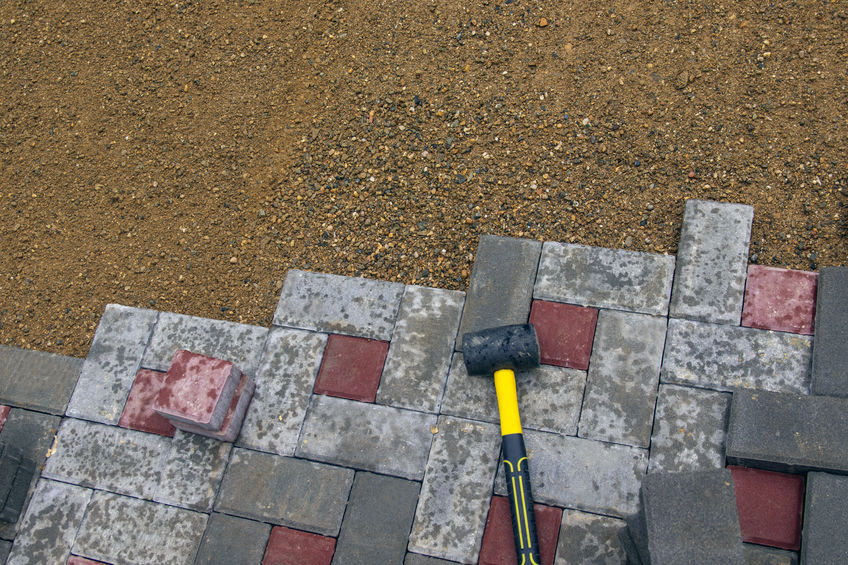The Right Slope for a Paver Patio
It is crucial to account for proper drainage across the entire structure when designing a paver-patio.

How to Measure the Slope for a Paver Patio
To measure the slope of your paver patio, you need a stake, a hammer, a string, and a line level. First, insert one stake at the top of the patio and another at the bottom where water will drain from the patio. Pound each stake with a hammer so that they are good and stable. Tie a string tightly around each stake and then slip a line level on the string. Adjust the string by moving it up and down as needed so it can be level between the stakes. Once everything is in place, determine the required amount of slope based on the size of your paver patio.
Keep in mind that the slope should be at least 1 inch for every 8 feet of the paver patio. For instance, a 16-foot patio will require 2 inches of the slope while a 12-foot patio will require 1 1/2 inches of the slope. You need to measure the calculated slope from the string tied at the drainage end of the patio. Use a pencil to mark this location and then move down the string to the mark you have made on the stake.
Fixing a Paver Patio with an Improper Slope
It is more likely that your patio could have an improper slope if it has a problem with standing water. There are several ways you can fix this problem but the best way to make it appealing and long lasting is to bring down the existing setup and start over. The decision to fix or build a new patio comes down to how ‘flat’ the current patio is. One of the ways you can correct this issue is by adding a drain close to where stagnant water is collecting. Mark this location and then dig up the pavement using a jackhammer. After removing the concrete, you need to dig a trench that can hold at least a two-inch layer of sand as well as the drain channel. Lay the drain and then cover it with a gate.
However, this fix only works well for those who have a concrete pad for their patio. You can have a difficult time if your patio is made of pavers or stamped concrete. The best way to fix a paver patio is to start over since you will take all the necessary precautions to ensure it is sloped correctly. You need to remove any soft soil, vegetation, or rocks before you begin. Consider installing a French drain at the edge or run a pipe under the patio to ensure proper drainage. You can only lay your patio when the ground is uniform in both materials and levels.
Rainy days are more likely to leave standing water on your patio if it is not sloped properly. Not only can this damage your foundation but also creates a hazardous environment for you and your family. Using correct measurements when determining the slope of your patio ensures proper drainage of rainwater away from the foundation. Paver patios require careful planning to give a beautiful and usable outdoor space that can last for a lifetime.
